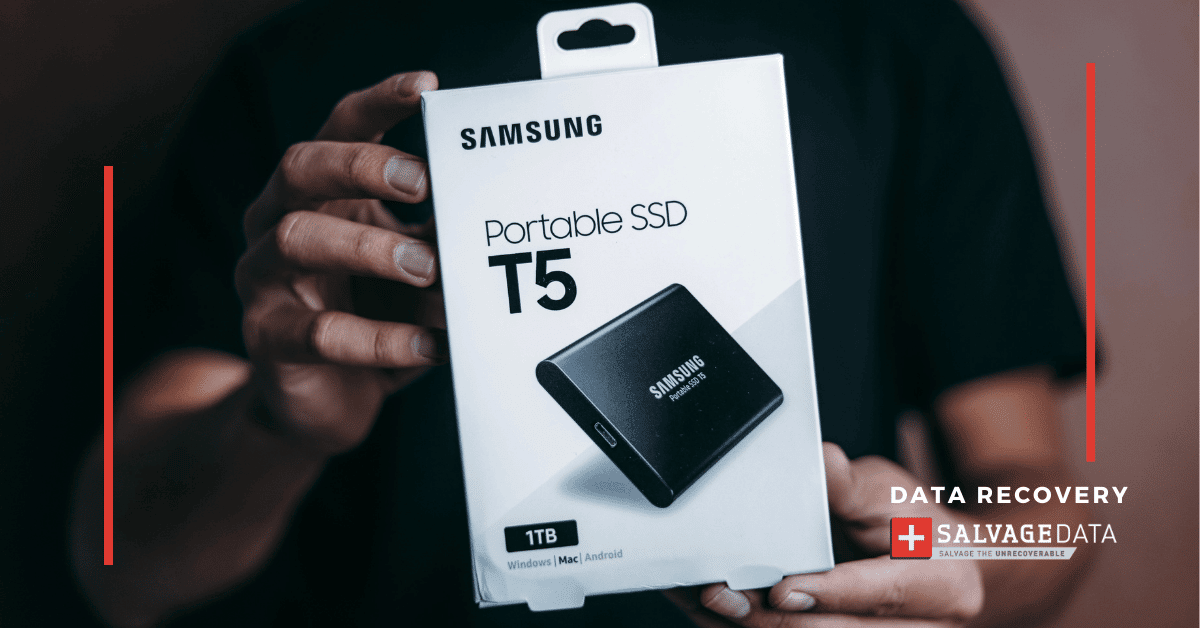Recent Articles
Quickest Mobile Data Recovery Case: 100% of Data Recovered in One Hour
How to fix a corrupted database on PS4
How to Troubleshoot Black or Blank Screens in Windows
LockBit Ransomware: A Comprehensive Guide to the Most Prolific Cyber Threat
How To Use iPad Recovery Mode
How to Prevent Overwriting Files: Best Practices
External Hard Drive Not Showing Up On Windows – Solved
How to Fix a Corrupted iPhone Backup
Backup and Remote Wiping Procedures
Common VMware Issues and Troubleshooting Solutions

I think there's an issue with my storage device, but I'm not sure Start a free evaluation →
I need help getting my data back right now Call now (800) 972-3282
Solid-state drives are popularly known due to their reliability and speed. Unlike hard drives, solid-state drives work with no moving parts and are seen as less prone to damage.
However, SSDs are not fail-proof. And even the most reliable and modern Samsung SSD can fail. The good news: Samsung SSD data recovery is possible with the right tools and knowledge.
Samsung SSD Data Recovery
Samsung has been at the forefront when it comes to manufacturing electronics. Be it computers, smartphones, televisions, and storage devices, such as solid-state drives. And for each Samsung device, there’s a recovery solution.
SalvageData experts can help you with SSD data recovery services as well as with HDD and other Samsung recovery services. Contact SalvageData 24/7 and find the best solid-state drive data recovery service for your needs.
You can also try some SSD data recovery on your own by identifying the solid-state drive failure symptoms and using safe data recovery software.

Causes of data loss in Samsung SSD
Unlike hard drives, where there is a disk and a read/write head, solid-state drives use flash memory chips to store data. Yet, it is not immune to corruption or loss of data. There are a few things that can cause an SSD to lose data.
By learning the causes, you can prevent data loss of your Samsung SSD.
Important: Keep two or more updated backups of your Samsung data to avoid important data loss.
1. Careless formatting or deletion
You might accidentally delete some files only to realize later that the deleted files are essential.
To recover deleted files you can try different solutions, including a recovery software tool. These programs will give you a step-by-step walkthrough of what you are supposed to do during a Samsung SSD data recovery.
Also, it’s very important to learn how to delete files securely.
2. Electronic components failure
Even though the technology used to create these solid-state drives are different, they still use electronic components to achieve their goal.
When one or more of these components fails or brokes, data on the drive might also get corrupted or lost.
To recover data from such a drive, all parts must be examined and repaired before making any recovery attempts. Since this usually needs some specialized knowledge and a cleanroom, it’s recommended to contact data recovery professionals.

3. Data corruption
You can see corrupted data on the drive but it’s of no use to you since it is incomplete. Fortunately, you can recover corrupted files on a Samsung SSD.
However, due to the volatility of the data, it’s recommended a data recovery specialist take charge of the recovery process.
4. Physical damage
Solid-state drives are not immune to physical damage. Just like with HDDs, physical damage can cause parts of the drive to break or even dislodge from their normal position. Consequently, this makes pulling data off the drive more complex or nearly impossible.
A physical damage SSD needs to be opened in a clean room. Therefore, you should not attempt to do any repairs by yourself.
Engaging the services of a top-tier data recovery firm such as SalvageData is the best hope for any data you have on the disk. Any damaged parts will have to be repaired before starting the recovery process.
5. Malware and viruses
Malware and viruses are a great cause of data loss in Samsung SSDs.
An unsuspecting user might unknowingly download a file embedded with malware from the internet. This malware then proceeds to delete or corrupt data.
Use a powerful antivirus and antimalware to scan and delete any malicious file from your Samsung SSD. Then restore your data from a backup.
If you don’t have a recent backup of your data, contact SalvageData immediately for help.
TL; DR: Samsung SSD data recovery is possible when you trust a highly qualified team with cutting-edge tools. To increase the chances of a successful Samsung data recovery, you should immediately stop using the drive and contact a professional data recovery service. Improper care, accidental deletion, virus infection, physical damage, and mechanical failure can all result in data loss on a Samsung SSD. Regularly back up your data to avoid unnecessary worries and frustrations.
SalvageData provides personalized Samsung SSD data recovery services and support for any other Samsung product. Contact our specialists today for more information.













